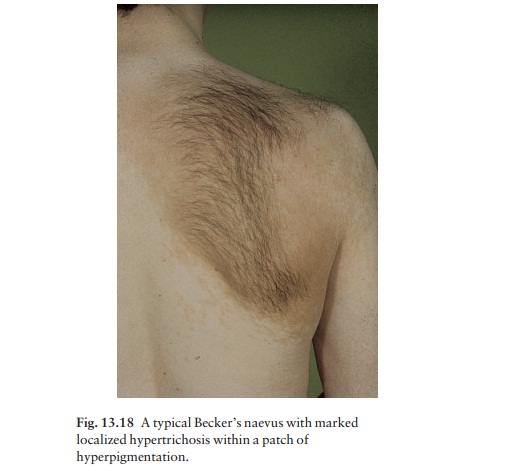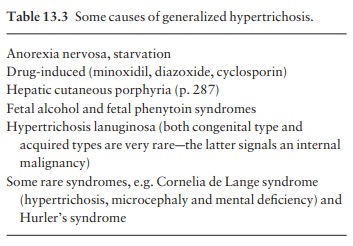Chapter: Clinical Dermatology: Regional dermatology
Hypertrichosis

Hypertrichosis
The
localized type is most commonly seen over mela-nocytic naevi including Becker’s
naevi (Fig. 13.18). It can also affect the sacral areaaas a ‘satyr’s tuft’ain
some patients with spina bifida. Excessive amounts of hair may grow near
chronically inflamed joints or under plaster casts. Repeated shaving does not
bring on hypertrichosis although
occupational pressure may do so,
e.g. from carrying weights on the shoulder. Generalized hypertrichosis is much
less common.

Some
causes are listed in Table 13.3.

Hair cosmetics
Hair can be made more attractive by dyeing, bleach-ing and waving, but there is often a price to be paid for beauty. Some hair dyes based on paraphenylenedi-amine are allergens. Bleaches can weaken the hair shafts, and hair damaged in this way is espe-cially susceptible to further damage by permanent waving.
Permanent
waving solutions reduce disulphide bonds within hair keratin and so allow the
hair to be deformed before being reset in a new position. The thioglycollates
in use to dissolve disulphide bonds are also popular as chemical hair removers.
If used incor-rectly, either too strong or for too long, or on hair already
damaged by excessive bleaching or waving, thioglycollate waving lotions can
cause hairs to break off flush with the scalp. This hair loss, which can be
severe although temporary, may be accompanied by an irritant dermatitis of the
scalp.
Related Topics